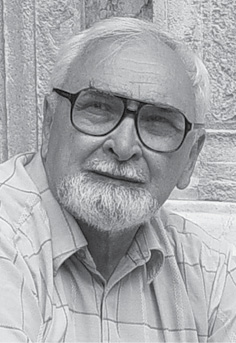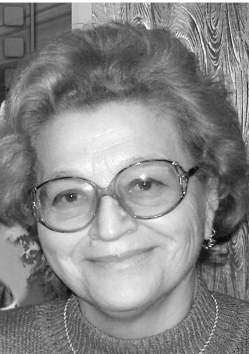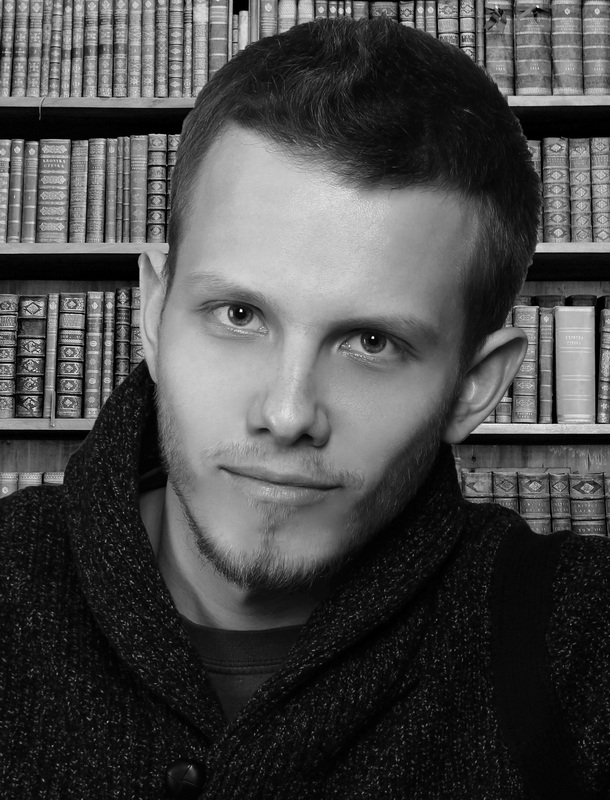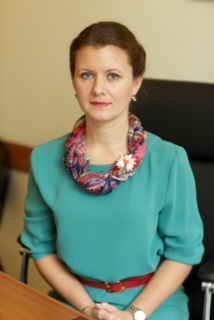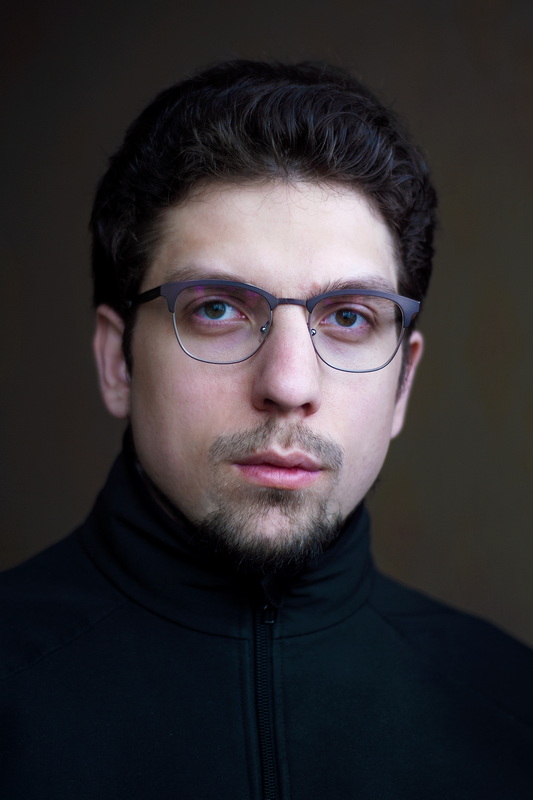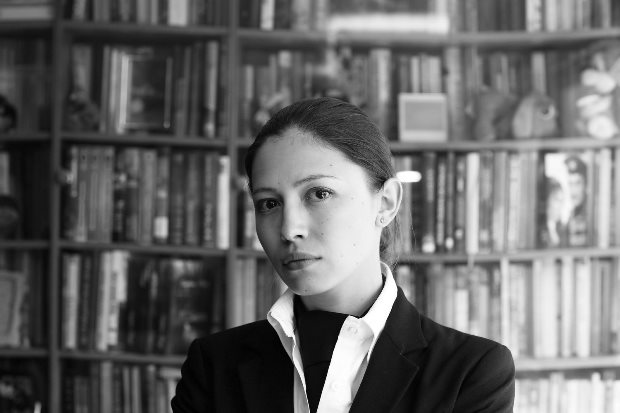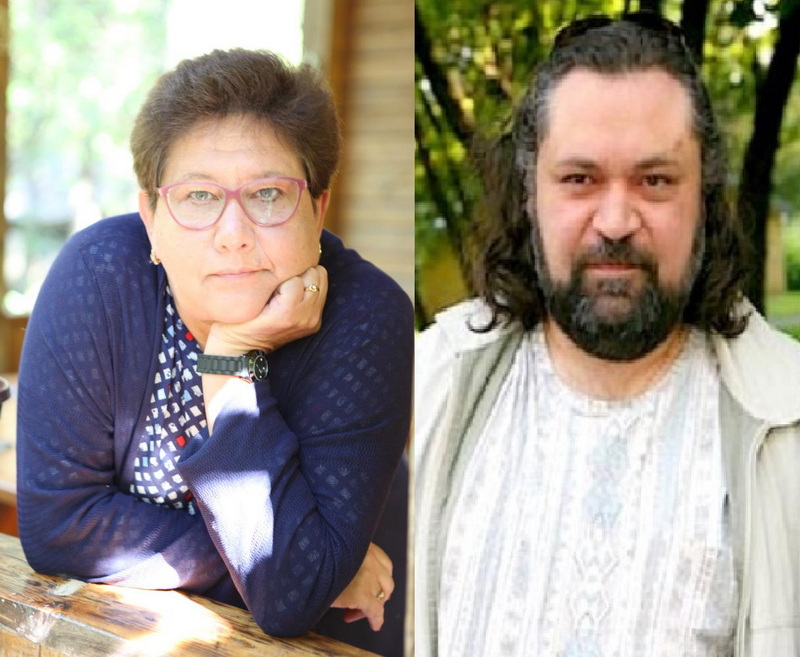Vol 11, No 2 (2019)
- Year: 2019
- Articles: 16
- URL: https://journals.eco-vector.com/2074-0832/issue/view/922
- DOI: https://doi.org/10.17816/VGIK112
Full Issue
CHRONICLE IN DETAIL | CURRENT EVENTS
VGIK Days in the Republic of Serbia
Abstract
The visit of the VGIK delegation to the Republic of Serbia and the mutual exchange of experience with colleagues was fruitful. exchange of experience was fruitful. The program of anniversary events included master classes, joint classes and a concert class of students of the All-Russian State Institute of Cinematography named after S.A. Gerasimov and the Faculty of Dramatic Art of the University of Belgrade (FDU), as well as showing films of graduates and students of VGIK.
 6-6
6-6


THEORY AND HISTORY OF CINEMA | AUDIOVISUAL ARTS
The environment of the cinematic spectacle. The architecture of the early Russian movie theaters
Abstract
The emergence of cinema brought about the issue of forming a comfortable environment for film screenings. This essay analyzes the characteristics of the first spaces used for film exhibition in St. Petersburg and Moscow and the architecture of the movie theaters built in these cities in the first decades of the 20th century and characterized by a combination of theatrical architectural traditions, eclectic restaurant design and elements of the fading Art Nouveau style.
Film exhibition was a profitable business. Initially, screenings were held in rented spaces but soon specialized buildings were designed and constructed. The essay looks at the largest and most popular movie theaters built in St. Petersburg’s main street, Nevsky Prospect, and in the center of Moscow, discussing their architectural features and their historical development. Thus, during the 1920s and 1930s, large movie theaters included a foyer with a stage for variety shows and a theater-like auditorium with a high-mounted, dark-framed screen; the spectators entered the auditorium via the main entrance and, after the screening, exited directly to a street or a yard.
 8-20
8-20


Russian Documentary at the Turn of the 21st Century
Abstract
The essay analyzes creative problems of the screen language of Russian documentaries at the turn of the 21st century in the context of the changed system of film production and promotion, as well as the changed paradigm of relations between the author and the hero and the evolution of the expressive methods of the documentary film which took place in that period. The essay reflects on the problems of the development of Russian documentaries at a crucial time when the issues of the survival of the documentary, so acute in the 1990s, have been overcome and are now bringing to the fore creative searches exploring essential contemporary phenomena. The author sees these innovations in the new concept of the documentary hero and in the formation of other authorial tasks and techniques aimed at capturing the uniqueness of the philosophy of human existence in the circumstances of a new social and psychological reality. Analysis of such films as Passengers of the Last Century, Solzhenitsyn. Life Is Not a Lie, Starling, David, Sorry for Living, Just Life, Live and Rejoice and others reveals the problems of the “homo historicus”, the relationship between the author and the hero, the new interrelationship between the ethical and the aesthetic, and the specifics of a human being’s self-realization in a dialogue with the author. At the same time, the essay emphasizes the continuity of the creative searches by documentary filmmakers of different generations in mastering the "human material" of the new reality.
 21-32
21-32


FILM LANGUAGE AND TIME | IMAGE GENESIS
Viktor Turin's Turksib as an ecological message
Abstract
The documentary by Victor Turin The Steel Way. Turksib (1929) is analyzed in this essay from the perspective of interaction between nature and society. The essay compares Turksib with the avant-garde films of Dziga Vertov and analyzes the language, editing system and poetics of intertitles characteristic of Turin’s film. It is noted that in the visual structure of Turksib images of the “sculpting in time” (according to Andrei Tarkovsky) allocate a significant role to the ethnographic pictures of local people’s life, virgin landscapes and wild and domestic animals. The accent is put on the emphatic rhythm of the intertitles, which actualizes the problems of interaction between nature and society. The construction of the Turkestan-Siberian railway through the Kazakh steppe and the Siberian forests demonstrates the advancement of scientism whose proponents are convinced of the inevitability of scientific and technological progress. The essay shows how the attitudes of the representatives of power, the transformers of the region lead to a change in value priorities in particular, towards “the pacifying of the stubborn nature” with the aim of putting it at the service of man. The essay ends with an analysis of Turksib’s significance as an ecological message and concludes that if the ideas and artistic techniques of Turin’s film were developed further, the history of documentary cinema in the following decades could include ecology as one of its major directions.
 34-42
34-42


VR Cinema. Virtual Spectacle as a Dream
Abstract
The essay analyzes the meaning of the term “immersion” in relation to its application in modern cinema, explores the significance of physiological sensations in the perception of artistic and entertaining VR content, and discusses the main features of the aesthetics of 360° spherical video.
In a state of immersion, a person ceases to psychologically perceive the screen as a repeater of an artificially created world, actually merging with the surrounding space. This technology, embodied in VR films, poses many still unresolved issues: the management of the subject’s attention, the role of editing, the quality of sound, the use of music, film narration, the participation of the viewer in a film's events, work with light and color.
The VR video format with a 360° overview is used in many areas: music videos, virtual tours, documentary travels, independent “dives” into art works, digital painting, and installations. In all these cases, the viewer feels like an observer, finding himself in the very center of an infinite, all-encompassing virtuality.
In contrast to the traditional film that appeals to the mass consciousness of the audience, the viewing of VR content is aimed at the personal self-awareness of the individual. Images perceived in this format have a potentially higher impact on the human psyche and the human unconscious because they are remembered more vividly as a result of the complex involvement in the personalized experience “here and now”. The ability of the author-artist to create for the viewer an emotionally saturated “dream” — with the psychological fusion of the subject and the space takes place — is a qualitatively new quality of VR dives, a feature uncharacteristic of traditional visual arts.
 43-52
43-52


PERFORMANCE | ART OF PRESENTATION
The image of prince Myshkin in Russian cinema
Abstract
The research is dedicated to the screen adaptations of Fyodor Dostoevsky’s The Idiot made in Russia in different cultural and historical periods. Films produced from 1910 to 2003 are analyzed in chronological order, with the aim of showing the transformation of the image of Prince Myshkin (Prince Christ), one of the key images of Russian culture1 within Russian national consciousness.
The essay analyzes the following films:
- The Idiot (1910), directed by Pyotr Chardynin
- Idiot (Nastasya Filippovna) (1958), directed by Ivan Pyryev
- Idiot (1981), directed by Vladimir Tumaev
- Down House (2001), directed by Roman Kachanov
- Idiot (TV series, 2003), directed by Vladimir Bortko
The essay reveals gradual “trivialization” of the image of Prince Myshkin. The first step down was from the “divine child” of Pyotr Chardynin to the “angel” of Ivan Pyriev. God placed man above angels, so Chardynin shows Myshkin as a pure child of the Garden of Eden, the highest among the analyzed screen images of the novel’s main character. The second step was made from Pyriev's “angel” to Vladimir Tumaev's “fallen Adam”. In Tumaev’s 1981 adaptation, the image of Prince Myshkin is still characterized by evangelical parallels but they are absent in the characters created in the 2000s by Roman Kachanov and Vladimir Bortko. Ordinary people with varying degrees of mental disorders become substitutes for “Prince Christ”.
1 Dostoevsky calls Prince Myshkin "Prince Christ" in drafts to the The Idiot. The writer accentuates the evangelical parallels of this image are
 54-63
54-63


The sound world of the alienated film character
Abstract
Alienation is a concept interpreted from different angles and used in various areas of human thought: in philosophy, psychology, sociology, law, and economics. Some theoretical works and those works of art which center on the phenomenon of alienation, emphasize three main aspects of this phenomenon: alienation as the loss of essential connections (identification) with the outside world (society, social group, nature); with close people (the loved one, family, friends) and, ultimately, with oneself, the true self. It is these aspects of the understanding of alienation that can also be seen in cinema — an art form which, perhaps, responds to the problems and events of contemporary reality in the quickest and most vivid way. Most frequently, the theme of alienation in the film is based on the development of the artistic image of one — as a rule, the main —character. Despite the fact that alienation a priori implies the “alienation” of the actor’s performance and the minimization of expressive means, the ideas and deep meanings that are very important for the director, the director’s aesthetic and ethical principles and his or her interpretation of contemporary problems are often conveyed through the image of the alienated character. The essay deals with the visual and sound techniques and the semantics of word and music employed in the process of creating the inner and the outer worlds of an alienated film character.
 64-78
64-78


Framing as a method of creating a film's metaphorical context
Abstract
This essay continues the study of the semiotics and synergetics of Framing in the Art of Cinematography which substantiates the hypothesis that framing (perspective) constitutes one of the most important codes of screen communication in its cinematographic and metaphorical contexts. Thus, framing is represented by two hierarchical levels of representation of contextual semiotic connections: the connection between mise-en-cadre and mise-en-scène (the level of the cinematographic form of film sign); and the relationship between cinematographic imagery, action and meaning (the level of the cinema sign).
Framing consolidates the process of cinematography divided by the artistic and production dichotomy, which is especially important in the context of mass culture determined by the total industrialization of all areas of life, including cinema.
The essay is based on the statement of Sergei Eisenstein that each “high” film work has the unity of two dialectical categories: the content (abstract language, part of logical thinking) and the form (emotional language, part of emotional-sensory thinking). It identifies and analyzes the spatial-temporal and linear-tonal features of cinematic framing as a method of expressing the metaphorical existential context of the crisis of Russian self-identification, using as examples a number of expressive episodes of the documentary film Anna: 6–18 (1980-1993; dir. Nikita Mikhalkov, DOPs: Pavel Lebeshev, Vadim Yusov, Vadim Alisov, and Elizbar Karavaev). This film work is explored as a study of the socio-cultural situation in modern Russia undertaken from a multi-faceted and multi-level authorial perspective associated with expressive cinematographic framing.
 79-86
79-86


Actual problems of the composition of the artistic image
Abstract
This essay explores the general compositional features by opposing the common understanding of composition as “an arrangement of the image on the sheet surface”. An image is essentially a text that conveys information from the author to the viewer and has no meaning without them. The main premise is that a semantic compositional unit can be represented by the sequence “conveyor — image — perceiver”. It is shown that a pictorial text consists of separate elements with a certain structure (experiments of R. Pritchard). These elements, in turn, are closely interrelated with each other, and only in this connection can their artistic meaning be perceived. The perception of meaning is a temporal process, which is determined by the transition of gaze from one group of elements to another. In different contexts and with a different “route” of perception, the same group can carry different meanings. It is important that if the image does not carry any specific information for us it can nevertheless cause associations which mostly reflect our inner essence. In this case, the viewer can understand the original general meaning of the work very subjectively, despite all the efforts of the author to show a clear structure of the image.
In this regard, the compositional “routes” of the spectator's perception of pictorial elements can differ greatly from one another, depending on the viewer's internal presets, which Alfred L. Yarbus proved experimentally back in the 1960s. The essay briefly discusses some properties of pictorial signs and their impacts on the emotional sphere of a person.
Finally, several pedagogical conclusions are made, in particular that the ability of the student to penetrate into the symbolic artistic-semantic structure requires education and development of his personality. Without this, he will only glean the surface, the material aspect of the image. That is why an unprepared student is often fond of "illusionism", of copying. Only serious pedagogical work that requires knowledge of the fundamental principles of composite image construction helps to cope with this.
 87-99
87-99


READING-ROOM | BOOK SHELF
 100
100


SCREEN CULTURE | CULTURAL STUDIES. PHILOSOPHY
Modern art history as a human science in a situation of cultural turn
Abstract
Intensive development of knowledge in the 20th century, including the emergence of new sciences and humanities, constantly creates a problematic situation in the sphere of art, shifting art’s designation to what in the philosophy of science is known as “normal science”. This is associated with the idea of art as a science that has reached a stage of maturity and consistency and, therefore, complies with its norms. The concept of art as “normal science” is characterized by a certain degree of conservatism, as it presupposes art’s self-protection against deviations from the established methodology.
However, sometimes the artistic processes of modernity require different approaches. In addition, the emergence of new humanities shifts the already established methodology of art. This happened in the first decades of the 20th century, in the era of a linguistic turn in the humanities, indicating the invasion of natural sciences in the humanities; and this is happening today, at the turn of the 21st century, in a situation of a cultural turn, the emergence and intensive development of the science of culture. The current turn requires a deeper understanding of the structure and components of art history, i.e., its sub-disciplines: art history, art theory and art criticism.
The essay argues that in the situation of cultural turn the theory of art can carry out functions which the other two sub-disciplines cannot. It propounds that art theory is able to make a decisive contribution to the elucidation of two problems: the relationship between art and cultural studies and the problem of historical time, which is important both for contemporary art and for art history.
 102-115
102-115


The ‘hero archetype’ in the neo-mythological context of contemporary screen culture
Abstract
The essay examines the image of the hero in the contemporary neo-mythological field of mass screen culture. The author identifies the main features of the ‘hero archetype’ and the core cultural meanings forming this concept and analyzes images of the neo-mythological heroes of our time, taking examples of mass cinema and authorial cinema and revealing differences between these two categories. According to the author, mass culture creates the hero model according to the principle of ‘bricolage’, remaining within the framework of the Christian eschatological paradigm and synthesizing it with scientific and technical progress or other elements but not reproducing the structure of the archaic myth. When the stereotype of “happy ending” replaces tragedy, it completely changes the true archetype of the hero more characteristic of art-house or authorial cinema. Examining the films of Jim Jarmusch and Alejandro González Iñárritu, the author analyzes the method of deconstruction in authorial cinema, a cinema which seeks to reveal the meanings of the archaic hero archetype. If mass cinema acts within the simulacrum system without transcending its limits — endlessly repeating the same models and often using only superficial formal properties — authorial cinema tries to explode the structure in such a way as to widen the boundaries of the senses or to discover them under the layers of simulacra. Thus, screen culture has the characteristics of a neo-mythology, forming the neo-myth and developing its elements and structures, producing a stream of neo-mythological images in the media landscape. The conglomerate of various structural elements borrowed from different traditions fully reflects the postmodern situation that turns symbols and archetypes into a set of simulacra. The era of postmodernism is a stage in the development of culture characterized by the problem of the impossibility of creating anything new. Postmodernism is a creative crisis which leads to excessive visuality and, paradoxically, to visuality’s death.
 116-126
116-126


WORLD CINEMA | ANALYSIS
Existential problematics in the films of Pedro Costa
Abstract
Films of the Portuguese director Pedro Costa seldom steal the limelight of cinema scholarship. The specific marginality of his works, the complex semi-documentary structure of his films and, at first glance, the social nature of his subjects complicate the analysis of his films. This essay undertakes a detailed investigation of his films' structures and problematics in the context of intellectual development in 21st-century European cinema. Four films by Costa — Bones (Ossos, 1997), In Vanda’s Room (No Quarto da Vanda, 2000), Colossal Youth (Juventude em Marcha, 2006) and Horse Money (Cavalo Dinheiro, 2014) are regarded as elements of a single artistic system that transforms, becomes more complex and absorbs more and more cultural codes.
The essay defines the motifs representative of the four films, visual metaphors that refer to sacred texts and the gradual transformation of the director’s aesthetics. It is motivated by the necessity to carry out a complex research of all components of Costa’s films from the existential perspective: in the author’s opinion, such perspective gives the opportunity to define specific features of the director’s aesthetics. The systemic interdisciplinary approach is determined by the necessity to expose the aesthetic and anthropological problems explored in Costa's films and to define their philosophical basis, using a combined historical, cultural, semiotic, anthropological and hermeneutical approach. The essay concludes that the core of Pedro Costa’s art relates to existential philosophy and anthropology and that his main concern is spirituality, a theme realized most adequately via cinema.
 128-138
128-138


TELEVISION | DIGITAL ENVIRONMENT
Artistic features of Russian TV serials about the Great Patriotic War
Abstract
The essay represents the first effort to explore the artistic methods employed in the TV series about World War II (the Great Patriotic War) and analyzes four multi-episode TV shows released in 2004. In its own way, each of these series responded to the new public interest in the less known aspects of the war. Simultaneously, each of them established a dialogue with the previous cinematic and TV productions, comprising direct reminiscences to earlier films, objectivizing the audience expectations formed by earlier productions, or even arguing with them. This dialogic trend should be considered as part of the postmodernist framework of contemporary television: reminiscences of popular post-war films or literal or visual citations from these films become an integral part of contemporary cinema and television and also act as documentary-like reference points.
In all reviewed cases, the authors emphasize adventure narratives well suited for TV presentation and rendered even more spectacular by modern visualization technologies. The producers are confronted with a contradiction between the chosen historical context and imaginary plotlines: it is quite difficult to put the series’ characters within the imaginary space, depriving them of the well-known facts, especially those propagated in earlier film and TV productions. Inevitably, each plot is aggressively influenced by the tragedy of the “little man”, in which the place of the enemy occupied in the Soviet tradition by the Gestapo and the Abwehr is replaced by the repressive Soviet state security services. Even a decade after its release, Shtrafbat (The Penal Battalion) plays a major role in the public and professional discussion on the ethics of war-related films and television series. Meanwhile, At a Nameless Height, a series which contains even more reminiscences to Soviet film and television productions, should be regarded as one of the earliest works in which the sense of authenticity was sacrificed to the imaginary expectations of the viewers – expectations formed by the Soviet historical and cultural framing.
 140-152
140-152


SUMMARY | PRESENTATION OF AUTHORS
 153-157
153-157


RECOMMENDATIONS AUTHORS
Рекомендации авторам
 158-160
158-160














